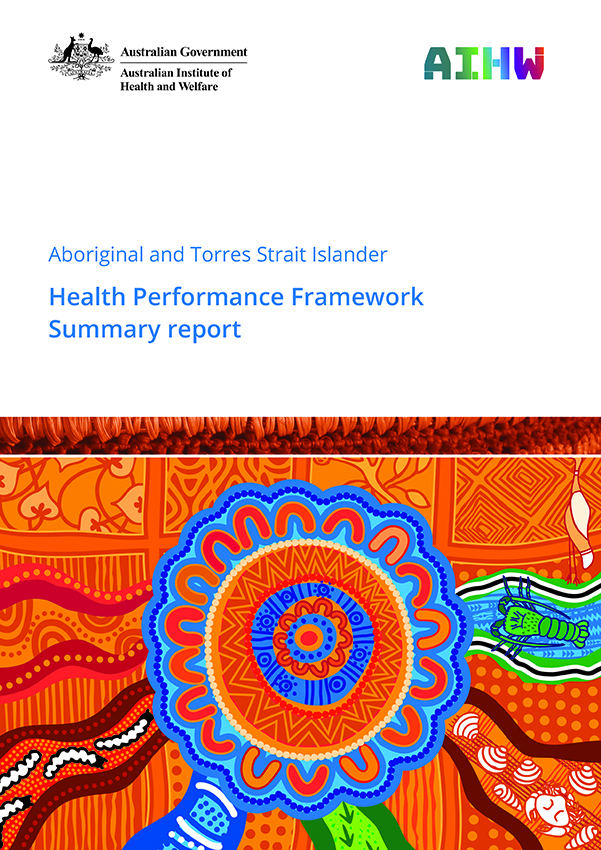This release incorporates updates from the following measures: 3.15 Access to prescription medicines and 3.21 Expenditure on Aboriginal and Torres Strait Islander health compared to need.
Overview
In 2018, the burden of disease among Aboriginal and Torres Strait Islander (First Nations) people was 2.3 times that of non-Indigenous Australians. Among First Nations people, mental and substance use disorders were the leading contributor to disease burden (24%).
Measures of health status (Tier 1), determinants of health (Tier 2), and health system performance (Tier 3) drawn from the Aboriginal and Torres Strait Islander Health Performance Framework (HPF) show mixed results. It is important to note that measures in the 3 tiers are interconnected, and understanding the reasons for progress (or lack thereof) in the health status and outcomes of First Nations people may often be best understood by examining relevant measures of determinants of health, and health system performance.
AIHW analysis of ABS health surveys for 2017–18 and 2018–19 showed that an estimated 35% of the total health gap between First Nations people and non-Indigenous Australians was explained by social determinants (e.g. employment, income, education, housing), and a further 30% by selected health risk factors (e.g. smoking). Around 35% of the gap was unexplained, reflecting factors that could not be included in the analysis. These factors are likely to include access to affordable and culturally appropriate health care services, connection to Country and language as well as actual and perceived racism.
First Nations people are often found to have relatively poorer access to health services than non-Indigenous Australians in relation to need, for a range of reasons, including barriers such as availability, cost and a lack of culturally appropriate health services. The HPF measures have a particular focus on differences by remoteness, given that in general, First Nations people living in rural and remote areas are more likely to live with, and die prematurely from, a disease or injury than their counterparts living in cities and towns.
The HPF highlights that enhanced health services and continued improvement in, and access to, comprehensive, culturally appropriate and safe primary health care services are needed to support improvements in health outcomes and reduce the burden of disease, preventable hospitalisations, and avoidable deaths among First Nations people.
For First Nations people, self-determination and empowerment, cultural identity, family and kinship, Country and caring for Country, knowledge and beliefs, language and participation in cultural activities and access to traditional lands are also key determinants of health and wellbeing.
The HPF shows improvements in some aspects of First Nations people’s health and social determinants, while other aspects have either not improved or worsened.
Across the HPF measures, in the last decade or so, there have been improvements in health-related measures such as smoking (including during pregnancy), attendance at antenatal care, immunisation, health assessments, chronic disease management, early detection and early treatment, deaths from cardiovascular and kidney diseases, and self-discharge from hospital. Social determinants such as Year 12 attainment, employment and home ownership, and youth detention have also improved.
However, there has been little or no progress in some measures, while some others have worsened. For example, key measures such as infant and child mortality, perinatal mortality, diabetes mortality, avoidable mortality and potentially preventable hospitalisations have shown little or no progress; while measures of suicide, death from cancer, female hospitalisation for assault, children in out-of-home care, and adult imprisonments have all worsened.


